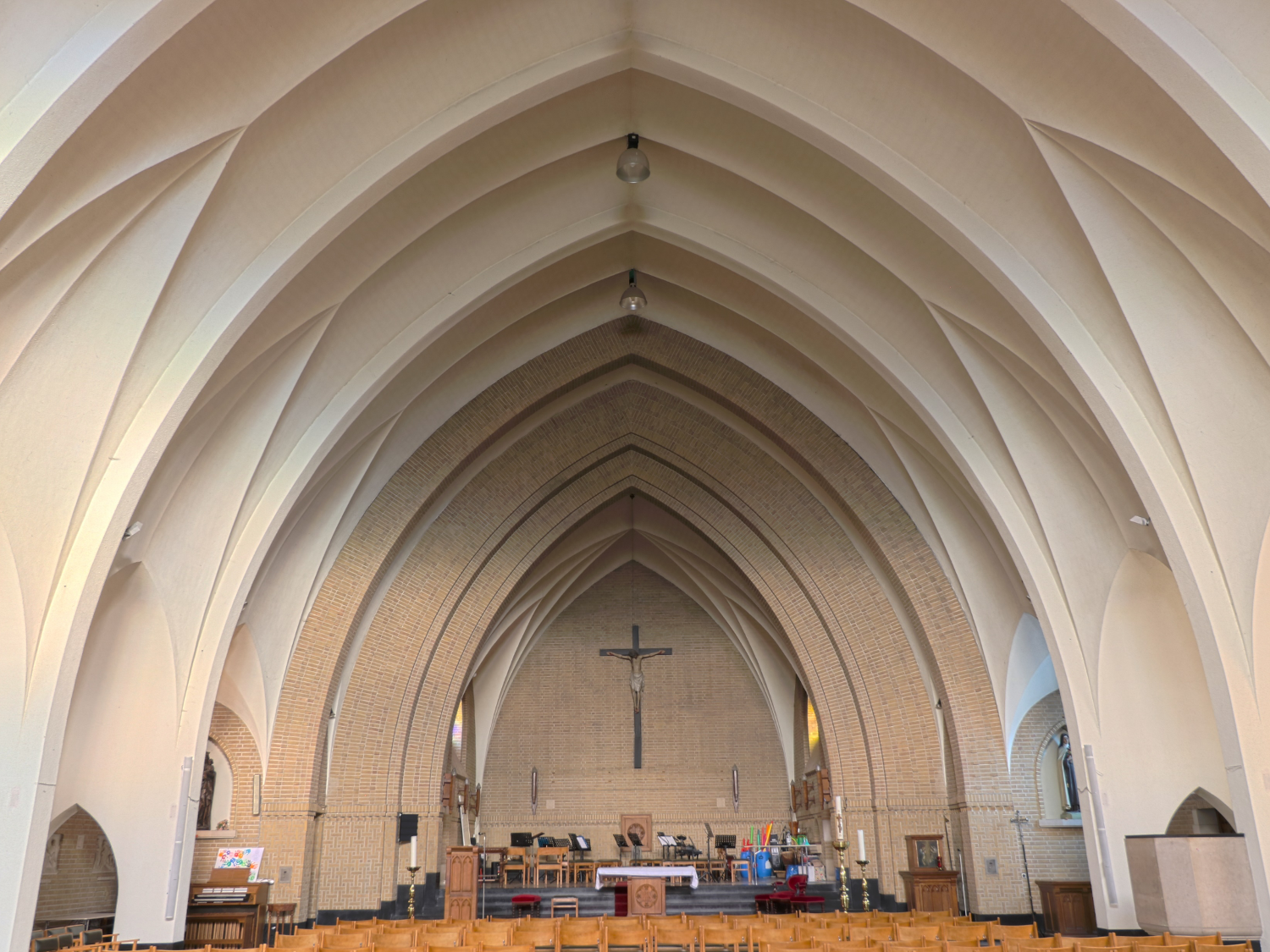The Vaults of Sint-Theresia’s church in Dilbeek (Belgium): Tradition and Innovation in Tile Vaults in the 20th Century
Autores: Paula Fuentes y Rosana Guerra
Tile vaults are a particular type of vault built without centering. Thin bricks (tiles) are placed flatwise, creating a thin surface formed by one or more layers of bricks. The bricks are set with plaster mortar. Plaster mortar hardens very fast, providing a cohesive bond that holds the bricks in place during the construction without the need of a centering. The lightness of these vaults, together with the few constructional means that are required, make of this technique a very economic one. Historically, tile vaults have been used in Mediterranean countries, such as Spain, south-east of France, and Italy. At the end of the nineteenth century, Rafael Guastavino (1842-1908) exported this technique to the United States, where he built thousands of vaults. This story is well-known. However, what it is not so well-known is the transmission of tile vaults to the rest of Europe. An ongoing research project about the history of the construction of Belgian vaults has discovered that this technique was introduced in Belgium at the beginning of the twentieth century, not only in churches but also in museums, palaces and other representative buildings. There is no evidence of earlier tile vaults in the country. However, between 1900 and 1950, hundreds of tile vaults were built in Belgium, and several contractors were specialized in this technique.
This paper explains the context of the construction of tile vaults in Belgium and studies the particular tile vaults of the church of Sint-Theresia van het kind Jezus, in Dilbeek with their constructive and geometrical innovations.
Fuentes, P. 2020. "The Vaults of Saint Therese in Dilbeek (Belgium): Tradition and Innovation in Tile Vaults in the 20th Century". In: Iron, Steel and Buildings: the Proceedings of the Seventh Conference of the Construction History Society, pp. 651-663.











